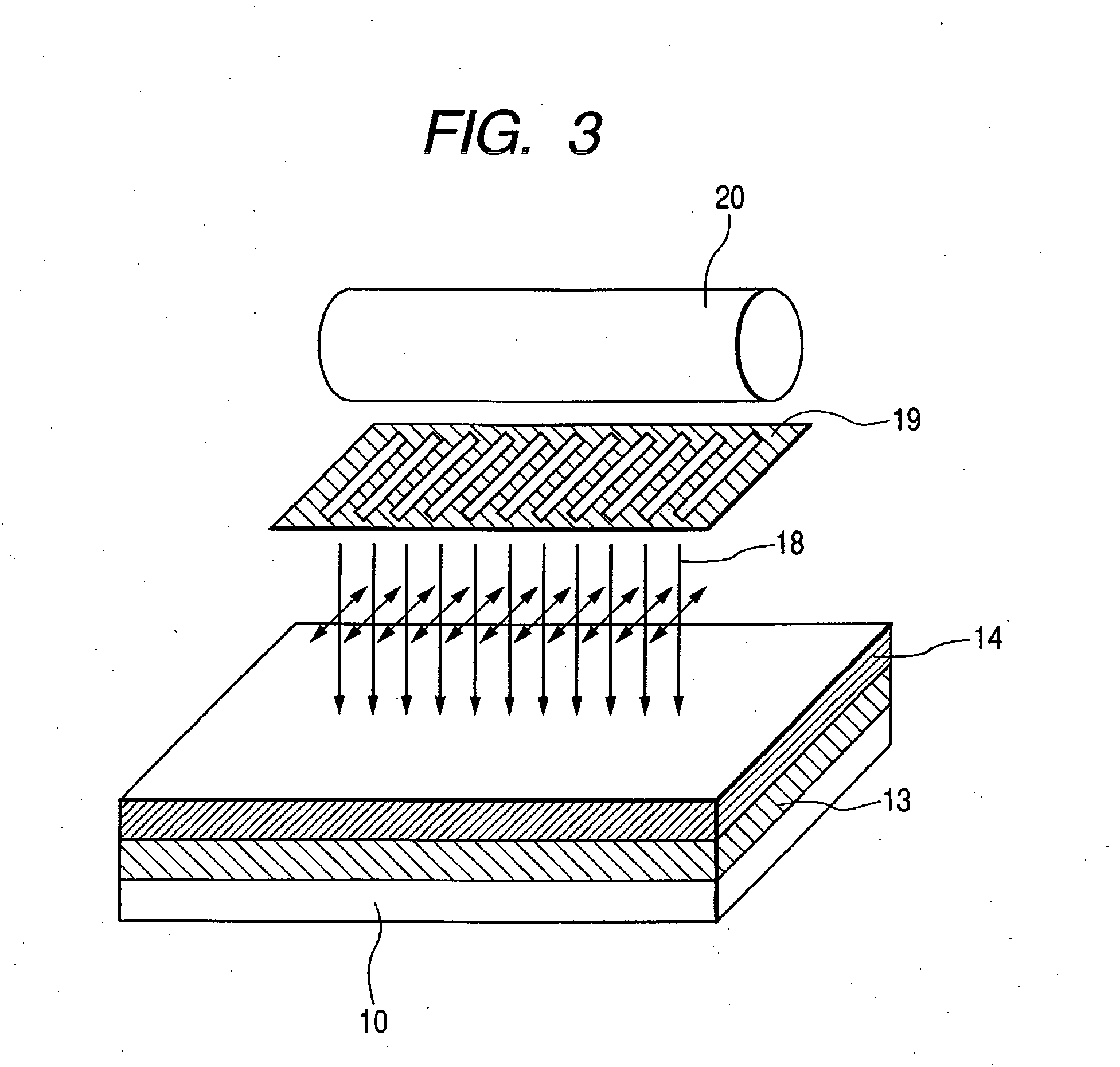Organic transistor and manufacturing method thereof
a manufacturing method and organic technology, applied in the direction of thermoelectric device junction materials, semiconductor devices, electrical apparatus, etc., can solve the problems of unrealistic as a process of manufacturing organic transistors, limited substrate materials, and difficulty in highly fine patterning, and achieve high electric characteristics, high free energy high-precision patterning, and high efficiency
- Summary
- Abstract
- Description
- Claims
- Application Information
AI Technical Summary
Benefits of technology
Problems solved by technology
Method used
Image
Examples
experiment 1
(Experiment 1)
[0079] Relationship of density of alkyl group, surface free energy (surface E), surface free energy hydrogen bonding term, water repellency and leak current will be described in the following Table 1. Table 1 shows relationship of density of alkyl group, surface free energy, hydrogen bonding term, water repellency and leak current in respective kinds of insulating films which are applied for describing experiments of the present invention.
TABLE 1HydrogenInsulatingAlkylSurface EbondingWaterfilmgroup(mN / m)(mN / m)repellencyLeakANone503.1xBNone492.5x∘CNone452.0xΔDSmall401.0∘xdensityEMiddle370.2∘xdensityFLarge350.0xdensity
(Note 1:)
Evaluation of water repellent reads as follows.
: extremely well water-repellent.
∘: comparatively water-repellent.
x: not water-repellent.
(Note 2:)
Evaluation of leak reads as follows.
: Leak current is extremely small and gives rise to no problem as an insulating layer.
∘: Leak current is comparatively small and gives rise to no problem as an...
experiment 2
(Experiment 2)
[0082] Surface free energy of an insulating layer consisting of polyimide containing an alkyl group in a side chain was caused to undergo partial change, and an experiment on striking water droplets differently was implemented with an ink-jet method. Onto a portion of an insulating layer with surface free energy being sufficiently low and showing an initial contact angle of 95 degrees which was subjected to irradiation of UV light to partially increase surface free energy and decrease the contact angle, water droplets were made to drop by an ink-jet method, and it was determined whether or not the droplets after landing went over a portion having a low surface free energy. Table 2 shows a result thereof. Table 2 shows relationship between contact angle of water of polyimide after 254 nm UV light irradiation and the state of striking droplets differently, to be applied to description of an experiment of the present invention.
TABLE 2Contact angle of water(subject to UV...
experiment 3
(Experiment 3)
[0086] Based on a result of Experiments 1 and 2, a substrate insulating layer with surface free energy of 40 mN / m or less was subjected to patterning thereon with UV light to form a portion to become a gate electrode with surface free energy of 50 mN / m or more and to consider to what extent gate electrode width can be struck differently. Consideration was implemented with water as solvent. As in FIG. 16, a gate electrode portion of a substrate insulating layer-coating part 23 on a glass substrate 22 and, at the same time, portions sufficiently larger in width than the gate electrode on both sides of the gate electrode was subjected to UV exposure so as to make the surface free energy of the portions high to carry out patterning, and water was caused to drop with ink jet in the portions on both sides of the gate electrode. Since surface free energy in the portion to become the gate electrode is sufficiently high than its circumference, water soaks the gate electrode por...
PUM
 Login to View More
Login to View More Abstract
Description
Claims
Application Information
 Login to View More
Login to View More - R&D
- Intellectual Property
- Life Sciences
- Materials
- Tech Scout
- Unparalleled Data Quality
- Higher Quality Content
- 60% Fewer Hallucinations
Browse by: Latest US Patents, China's latest patents, Technical Efficacy Thesaurus, Application Domain, Technology Topic, Popular Technical Reports.
© 2025 PatSnap. All rights reserved.Legal|Privacy policy|Modern Slavery Act Transparency Statement|Sitemap|About US| Contact US: help@patsnap.com



